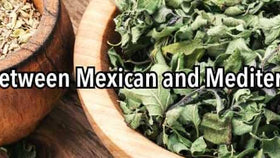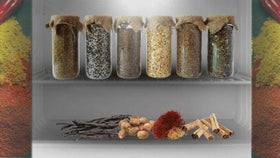Spices and Herbs—What's the Difference?
Spices and herbs both play their own unique, yet pivotal roles in transforming ordinary dishes into sensational delights. The terms "spices" and "herbs" are often (inaccurately) used interchangeably and while they both serve the unified purpose of adding flavor to dishes, they are divided in their ingredient categorizations and applications.
Understanding the Differences Between Spices and Herbs
Understanding the differences between spices and herbs is essential for anyone looking to elevate their cooking game.This article will expose the nuances that set these two flavoring categories apart.
Herbs and spices come from different parts of plants.
Herbs and spices are both derived from plants, but one of the primary distinctions between spices and herbs lies in which part of the plant. Herbs are typically the leaves of plants, harvested and used in their fresh form, and either used fresh or dehydrated and stored for later use. Think, oregano, thyme, cilantro, parsley, and basil.
Spices, on the other hand are derived from various parts of plants, including seeds, bark, roots, flowers, and even fruits. Unlike herbs, which are often preferred in their fresh form, most spices are only used once dried. Once dried, they are best stored in their whole form to preserve the essential oils. However, many will be immediately ground, packaged, and distributed to accommodate those who prefer convenience. Cinnamon, cumin, paprika, saffron, nutmeg, and coriander are great examples of dried spices that infuse dishes with intense flavors—especially when fresh ground.
Flavor Characteristics of Herbs and Spices
The characteristics of spices and herbs are shaped by the different parts of plants from which they are derived, and of course the plant type itself. Herbs, in general, contribute a burst of freshness and brightness to dishes—especially when used fresh. When they are dried, some of the fresh tones will dull, but the brightness will remain. The flavor spectrum may range from earthy to citrusy.
Spices too, have a large flavor range, but generally speaking, they will add layers of depth, warmth, and complexity to culinary creations. Cinnamon, nutmeg, and cloves impart rich, warm notes, perfect for enhancing the flavors of baked goods and savory dishes alike.
Both herbs and spices will cross paths on the flavor spectrum. For example, caraway seeds, coriander seeds, cilantro and basil are all often described as having an astringent bite; rosemary and mastiha are both thought of us piney; and tarragon, star anise, and fennel seed are allsaid to taste of licorice. Understanding these characteristic traits allows chefs to choose the right elements to balance and enhance their culinary masterpieces and the options and combinations for incorporating flavor components into dishes is truly endless. This is just one of the reasons cooking is considered to be an art.
*****While spices and herbs share a common goal of enhancing flavors, the characteristics that set them apart should be taken into consideration when determining the mix to use when seasoning your food.. Mastering the art of balancing these culinary elements allows chefs and home cooks alike to create dishes that awaken the taste buds and leave a lasting impression.
Crucial to flavor, though, is the quality of spice you are using. The essence of every herb and spice will begin to deteriorate after drying. Proper storage, buying whole and grinding just before use, and not stockpiling such ingredients will be essential in getting the most flavor out of your ingredients, and you will want to look into vendors who understand this and have high quality standards.










Slofoodgroup
Author